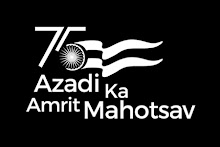15.11.11
Of Delhi Cluster buses
The Delhi government on Monday announced the introduction of cluster bus service in west and north Delhi. As part of it, 50 buses were pressed into service, which will ply on the Teevra Mudrika route, Punjabi Bagh and the Ring Road. Monday’s launch has increased the size of the cluster bus fleet to 150; but by the month-end, there will be 219 such buses plying in the city. The move has come six months after the launch of the first such service in the city. The bus service has been fraught with delays right from the beginning. By 2013, Delhi government is supposed to run 11,000 buses, 6,000 of which will be cluster buses. Transport minister Arvinder Singh has said by next year, 4,000 cluster buses will be on the road. The new cluster will have buses running in areas such as Punjabi Bagh, Mongolpuri, Kamla Market, Wazirpur Depot, ISBT Kashmere Gate, Sukhbir Nagar, Rithala Village, Old Delhi railway station, Rani Khera, Tikri Border and Azadpur Terminal. The combined length of the routes to be covered by the new buses is around 236 km. Incidentally, the 50 new buses on clusters III, IV and V, are not low-floor buses like those in the first cluster. Instead, these are semi low-floor buses that are modified standard-floor buses expected to run on lower costs. Sources said that the concessionaire for the semi low-floor bus clusters will be paid around Rs 33 per kilometre instead of around Rs 47 for the low-floor bus operators. The first cluster was launched in May for south Delhi areas with only 17 buses on two routes. Thereafter, the strength of the service was gradually built up to 100, with the new cluster service adding another 119 buses on clusters 3, 4 and 5. The total strength of the first cluster is ultimately to be 231 buses on 32 routes. For cluster 3, 182 buses will ply on 29 routes; for cluster 4, there will be 148 buses on 20 routes; and in cluster 5, 120 buses will run on 20 routes. The semi low-floor buses have an onboard passenger information system similar to that of Delhi Metro, GPS and electronic display board. In 2009, the Delhi government had divided nearly 650 bus routes across the city into 17 clusters, each comprising profitable and non-profitable routes, and decided to give each cluster to a private operator. The cluster bus service was envisaged to replace the 'killer' Blueline fleet, which has almost been phased out from the capital. The Delhi Transport Corporation currently operates around 6,500 buses, including 4,000 lowfloor buses.
Subscribe to:
Post Comments (Atom)



No comments:
Post a Comment